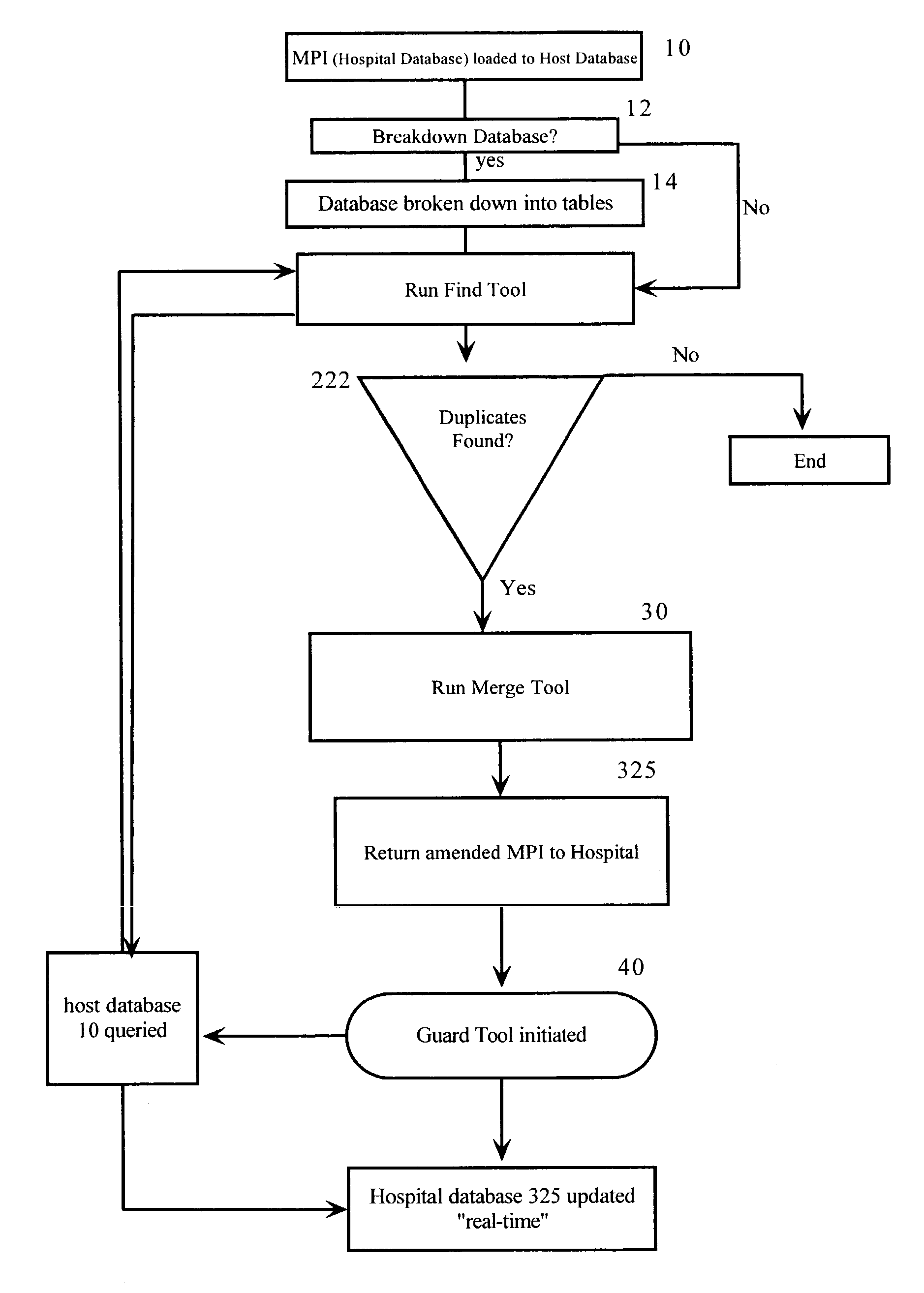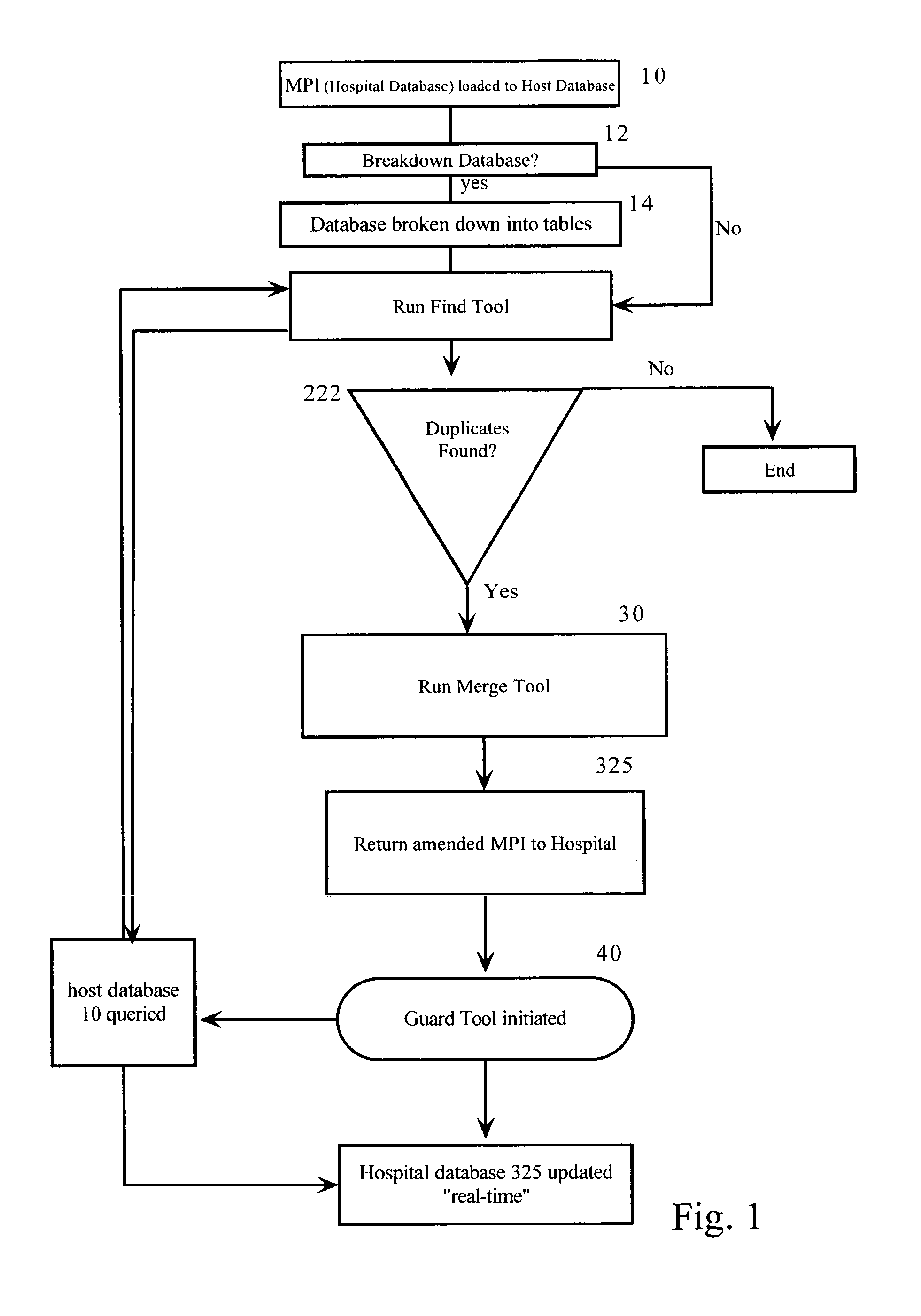Duplicate resolution system and method for data management
a data management and duplicate resolution technology, applied in medical data management, instruments, healthcare informatics, etc., can solve problems such as increasing the operating cost of an organization, affecting the organization's ability to meet the needs of patients,
- Summary
- Abstract
- Description
- Claims
- Application Information
AI Technical Summary
Benefits of technology
Problems solved by technology
Method used
Image
Examples
Embodiment Construction
[0060] So generally, the guard tool means is comprised of a data entry screen where patient demographics will be entered and passed to the host database. Database records that match the entered data will be passed back to the hospital database. Each record will contain a probability match percentage based on the matching algorithm. The user will then select the appropriate record that will be passed to the SMS application via scripting. Therefore, the registrar will not have to re-enter data into SMS. The list below contains the data that the registration personnel will have an opportunity to enter into the Guard Tool application for lookup into the database.
[0061] 1). Patient Name Prefix (optional)
[0062] 2). Patient Last Name (required)
[0063] 3). Patient First Name (required)
[0064] 4). Patient Middle Name (optional)
[0065] 5). Patient Name Suffix (optional)
[0066] 6). Patient Date of Birth (required)
[0067] 7). Patient Social Security Number (optional)
[0068] 8). Patient Maiden Name (o...
PUM
 Login to View More
Login to View More Abstract
Description
Claims
Application Information
 Login to View More
Login to View More - R&D
- Intellectual Property
- Life Sciences
- Materials
- Tech Scout
- Unparalleled Data Quality
- Higher Quality Content
- 60% Fewer Hallucinations
Browse by: Latest US Patents, China's latest patents, Technical Efficacy Thesaurus, Application Domain, Technology Topic, Popular Technical Reports.
© 2025 PatSnap. All rights reserved.Legal|Privacy policy|Modern Slavery Act Transparency Statement|Sitemap|About US| Contact US: help@patsnap.com



